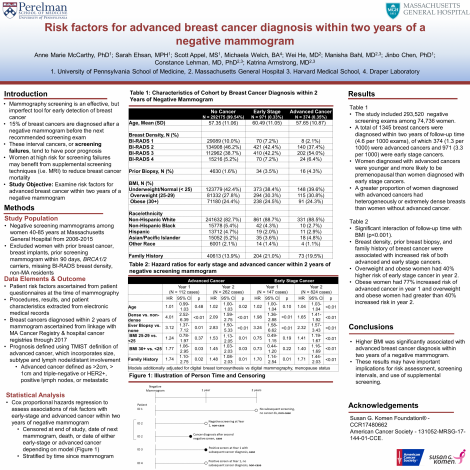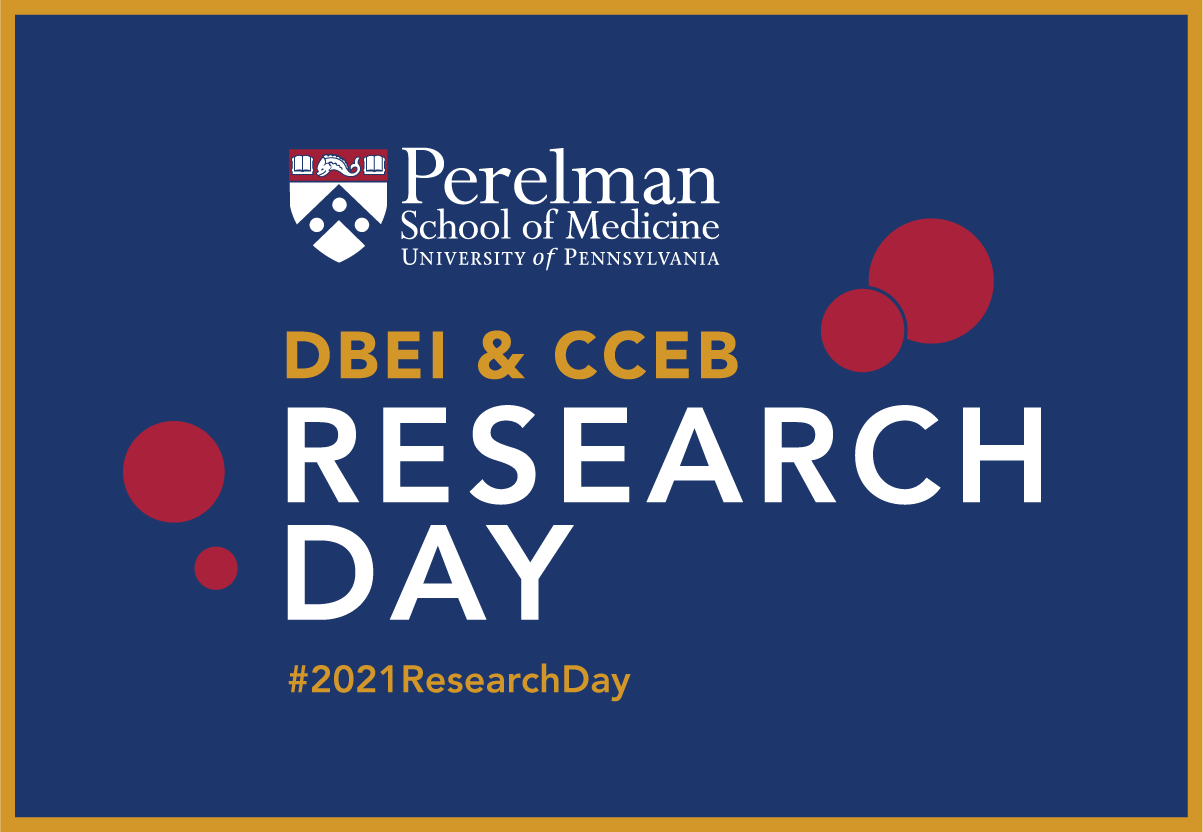Anne Marie McCarthy
Risk factors for advanced breast cancer diagnosis within two years of a negative mammogram
Abstract
Background: Identifying women at high risk for poor prognosis interval cancers would allow better targeting of mammography and supplemental screening. We assessed risk factors for advanced breast cancer within two years of a negative mammogram. Methods: The study included 293,520 negative mammograms among 74,736 women performed from 2006-2015. Breast cancers were defined as advanced if they were >2cm, >1cm and triple-negative or HER2-positive, had positive lymph nodes, or were metastatic. Cox proportional hazards modeling was used to estimate hazard ratios for cancer diagnosis within two years of a negative mammogram. Models were stratified by year since negative mammogram. Results: Among 1345 breast cancers, 374 (27.8%) were advanced (27.8%) and 971 (72.2%) were early stage. Breast density, prior breast biopsy, and family history of breast cancer were associated with increased risk of both advanced and early stage cancers. Overweight and obese women had 40% higher risk of early stage cancer only in year 2 (overweight HR=1.41 95% CI 1.19-1.67 p<0.001, obese HR=1.40 95% CI 1.16-1.69 p<0.001). In contrast, obese women had 77% increased risk of advanced cancer in year 1 (HR=1.77 95% CI 1.06-2.95 p=0.028), and overweight and obese women had greater than 40% increased risk in year 2 (overweight HR=1.53 95% CI 1.13-2.05 p=0.005, obese HR=1.45 95% CI 1.03-2.03 p=0.032). Conclusions: Higher BMI was significantly associated with advanced breast cancer diagnosis within two years of a negative mammogram. These results may have important implications for risk assessment, screening intervals, and use of supplemental screening.
Keywords
Mammography, Breast Cancer, Cancer Screening, Risk Factors, Body Mass Index, Breast DensityCommenting is now closed.
About Us
To understand health and disease today, we need new thinking and novel science —the kind we create when multiple disciplines work together from the ground up. That is why this department has put forward a bold vision in population-health science: a single academic home for biostatistics, epidemiology and informatics.
© 2023 Trustees of the University of Pennsylvania. All rights reserved.. | Disclaimer



